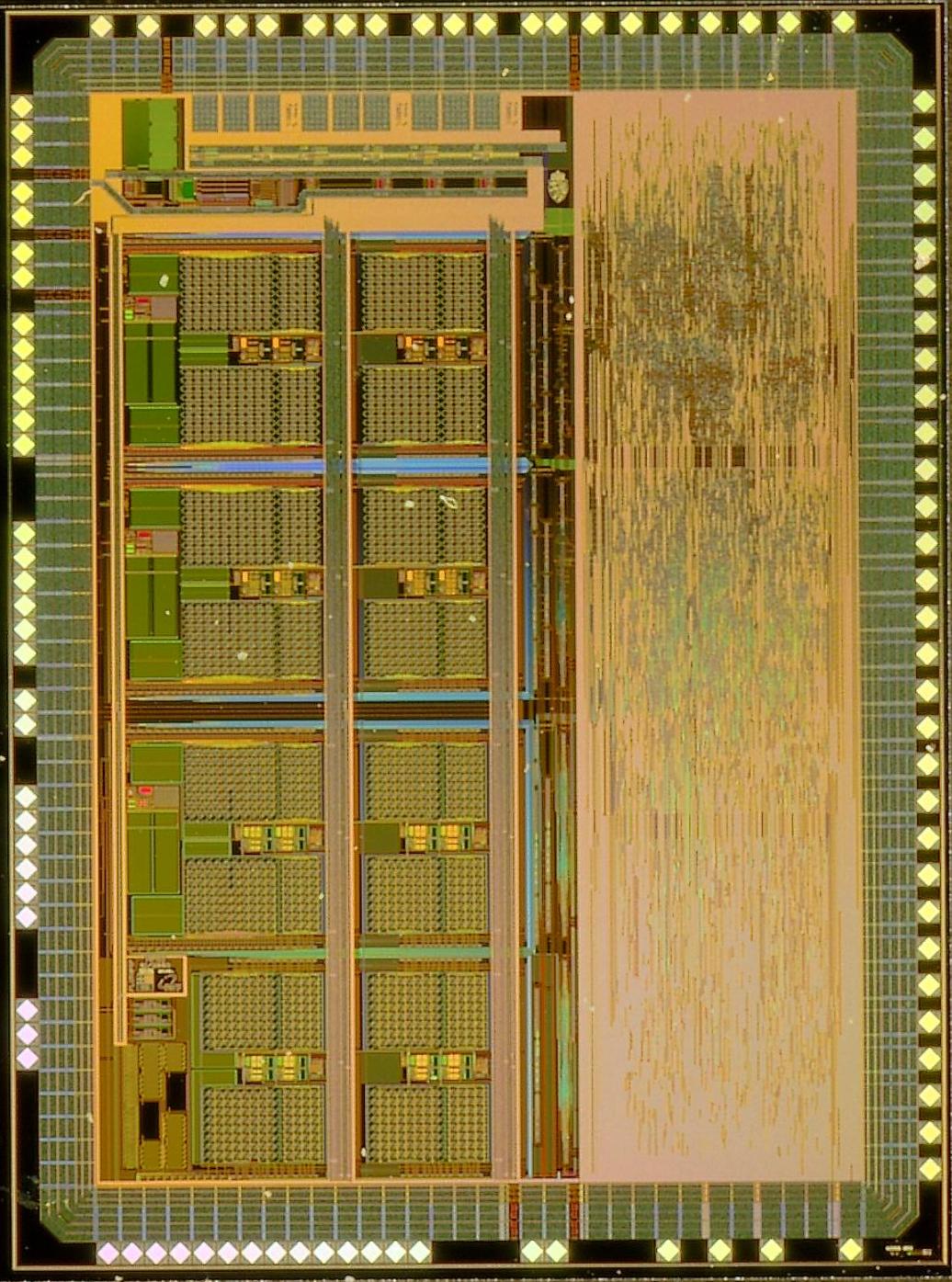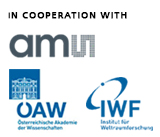Satellite-based exploration of the Earth’s magnetosphere
Erlangen, Unterpremstaetten, Austria, June 3, 2015 – The Fraunhofer Institute for Integrated Circuits IIS, the Space Research Institute (Institut für Weltraumforschung, IWF) of the Austrian Academy of Sciences (Österreichische Akademie der Wissenschaften, ÖAW) and the Full Service Foundry division of ams AG, a leading provider of high performance sensors and analog ICs enable highly accurate measurements of the Earth’s magnetosphere from space. For the first time a new kind of integrated circuit is used.
As part of NASA’s „Magnetospheric Multiscale“ mission launched in March 2015, four identically equipped satellites are performing highly accurate three-dimensional measurements of the Earth’s magnetosphere. The ambitious goal of this mission is to explore the dynamics of the magnetosphere, measuring with extreme accuracy very small variations in the Earth’s magnetic field. The research effort spearheaded by the Space Research Institute (based in Graz, Austria) is focused on the so-called magnetic reconnection, which is a physical process in which the Earth’s magnetic energy is converted to kinetic energy, thermal energy, and particle acceleration. Magnetic reconnection is one of the mechanisms responsible for the aurora, as well as for temporary disturbances in the Earth's magnetosphere.
Like all measurement instruments and equipment in satellites, the Space Research Institute’s magnetometer has to be as small and light as possible, while consuming very little power. In addition, it must offer very high accuracy under harsh conditions such as very low temperatures and radiation.
Developed by the Fraunhofer Institute for Integrated Circuits IIS in co-operation with the Space Research Institute, a tiny custom application specific integrated circuit (ASIC) enables the satellites’ digital flux-gate magnetometer (DFG) to acquire highly accurate three-dimensional measurements of the magnetosphere while drawing ultra-low current. The DFG sensor was supplied by the University of California, Los Angeles. Operating at a resolution of 10 picoTesla, which is several thousand times more sensitive than a conventional electronic compass, the device is able to sense the smallest variations in magnetic flux.
The Fraunhofer ASIC was fabricated by ams on its specialty 0.35μm CMOS (C35) process technology, which allows for the design of complex analog/mixed-signal integrated circuits. Based on a unique process architecture, the rad-hard C35 technology is very well suited for use in space and aerospace applications. The Fraunhofer and Space Research Institute design team also benefited from ams’s turnkey solutions for IC design, which include a comprehensive Process Development Kit (PDK) and IP block portfolio, advanced process technologies as well as product qualification services and supply chain management capabilities. These enable ams’s foundry customers to significantly mitigate their development risks and to reduce the duration of the development cycle.
“The ams specialty 0.35μm CMOS process enabled the team of researchers and scientists at Fraunhofer IIS to develop a complex analog/mixed-signal integrated circuit that impressively outperformed our expectations in all respects – performance, power consumption, die area and reliability” said Johann Hauer, project manager for ASIC Development at Fraunhofer IIS.
“After two months in space, we are very proud to confirm that the chip-based magnetometer significantly surpasses the requirements of accuracy and stability” commented Werner Magnes, deputy director at the Graz Space Research Institute.
„During almost 25 years of co-operation with Fraunhofer IIS, ams has successfully developed a vast number of complex integrated circuits for both research as well as industrial programs. We are happy that integrated circuits manufactured by ams now operate reliably in outer space and contribute to a better understanding of the Earth’s physics” stated Markus Wuchse, general manager of ams’s Full Service Foundry division.
About the Full Service Foundry division of ams
The Full Service Foundry division of ams has successfully positioned itself in the analog/mixed-signal foundry market. Its process technology portfolio includes 0.18μm and 0.35μm specialty technologies based on ams’s analog, mixed-signal, high-voltage and RF processes. With its ‘More than Silicon’ initiative, ams offers a comprehensive service and technology package that goes beyond industry-standard foundry services. It includes leading-edge technology extensions such as 3D ICs using Through Silicon Vias, color coating, back end process customization, WLCSP and many more. Superior support during the design phase, high-end tools and experienced engineers, silicon-proven high-performance analog IP blocks, assembly and test services for turnkey solutions complete the Full Service Foundry package.
About ams
ams is a global leader in the design and manufacture of advanced sensor solutions and analog ICs. Our mission is to shape the world with sensor solutions by providing a seamless interface between humans and technology. ams’ high-performance analog products drive applications requiring extreme precision, dynamic range, sensitivity, and ultra-low power consumption. Products include sensors, sensor interfaces, power management and wireless ICs for consumer, communications, industrial, medical, and automotive markets. With headquarters in Austria, ams employs over 1,700 people globally and serves more than 8,000 customers worldwide. ams is listed on the SIX Swiss stock exchange (ticker symbol: AMS). More information about ams can be found at www.ams.com.
About the Graz Space Research Institute
The Graz Space Research Institute (Institut für Weltraumforschung, IWF) of the Austrian Academy of Sciences (Österreichische Akademie der Wissenschaften, ÖAW) focuses on the physics and exploration of the solar system, covering the whole chain of research needed in its fields: from developing and building space-qualified instruments to analyzing and interpreting the data returned by these instruments. In terms of science, IWF concentrates on space plasma physics, on the upper atmospheres of solar system bodies and exoplanets, and on the Earth’s and the Moon’s gravity field.
Presently, IWF Graz is involved in fifteen international space missions, led by the European Space Agency (ESA), or by national space agencies in the US (NASA), Japan, Russia, and China. The missions cover fleets of satellites in near-Earth space, observation of the Sun, exploration of planets inside and outside our solar system, as well as orbiting and landing on comets.
More information: www.iwf.oeaw.ac.at

